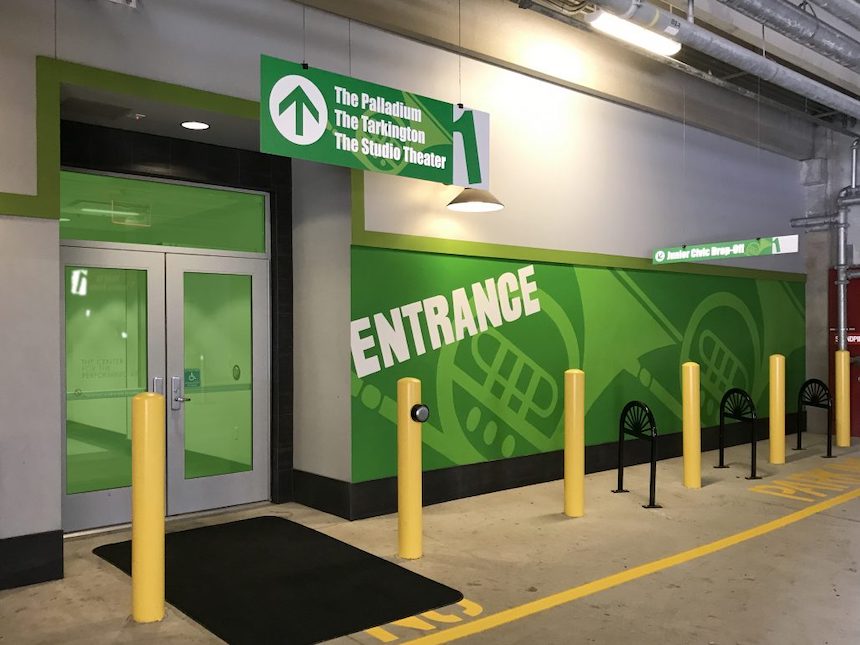Whether it’s a small town or a sprawling city, wayfinding signage is a necessity in every location. Even if it’s not a concrete jungle, venturing to any new place can feel like navigating a maze if you don’t know where you are or where you’re going!
While many people use GPS to help them find their way around, it’s only helpful if it knows where you’re going (and if you have cell reception)! Although technology has come a long way, there are still many reasons why wayfinding signage will always be necessary for navigation in public spaces.
This article outlines six reasons why wayfinding signage will never go out of style. For personalized advice, contact our team at Signworks today.
1. Helping People Find Their Way
Let’s be honest: Technology isn’t immune to malfunctions or glitches. Even with the latest and greatest cell phones with unlimited data, factors like skyscrapers, tunnels, and remote areas can render them useless when finding your way. And some people don’t use cell phones at all! However you look at it, wayfinding signage is crucial in any location.
Wayfinding signage must be designed to assist people at any point when navigating a public space. This concept applies to vehicles, pedestrians, residents, and visitors. This way, wayfinding signage is user-friendly for all.
2. Making Public Spaces Safe
Safety is paramount in any setting, including public spaces of all types. When it comes to towns and cities, wayfinding signage aims to improve safety by helping with traffic flow. This can be foot traffic and vehicle traffic, whether cars, bikes, golf carts, or even boats.
When everybody has clear instructions regarding who can move where and when, there should be less frustration and fewer accidents, enhancing safety and the overall experience.
3. Improving User Experience
Have you ever visited a place for the first time and been overwhelmed or unsure where to go? The bright lights, traffic whizzing by, and people going about their days around you can make for a daunting experience.
Strategically placed wayfinding signage around an area— a city, town, college campus, hospital, or any other setting— can simplify the experience and bring a sense of order and calm. When people look back on the first time they visited a particular place, it’s often not just the sights and sounds they remember but also how they felt. Wayfinding signage tends to help people feel more comfortable and confident, making for a positive user experience.
4. Promoting Economic Growth
Looking for a way to increase foot traffic to your business, town, event, or tourist destination? Wayfinding signage can help even more than you may have thought!
While large department stores and retail chains attract traffic based on their names and recognizability, smaller local businesses don’t have the same advantage. Wayfinding signage that describes the business or event and where to find it could make all the difference!
Many people prefer to shop in small stores where their money is more likely to stay in that community, so it makes sense to spring for wayfinding signage encouraging residents and visitors alike to shop locally. And even if residents know where you are and what you do, tourists don’t! Whatever you do, don’t let them pass by without visiting you and contributing to your local economy.
5. Branding and Rebranding
When communicating your brand, signage can make or break your intended message. People often assume this can only be done with color, images, and word choices, but it involves much more than that!
Wayfinding signage plays a significant role in branding and rebranding. By visualizing your audience and anticipating their needs, you can adopt an identity that speaks to your brand, whether that’s a product, service, or location. By incorporating wayfinding signage and designing it in a way that your audience will connect with, you can elaborate on who you are while making their day more manageable at the same time.
If you aim to help your city transform, evolve your business’ offerings, or anything else that symbolizes change, don’t forget the impact wayfinding signage can have.
6. Improving Accessibility
Accessibility is crucial anywhere and everywhere, and it all starts with signage. For example, for those with vision impairments, signage that includes Braille or other tactile surfaces helps a person recognize that it is a safe space where their needs have been taken into account. Meanwhile, signage placed at different heights and angles and on different scales may be helpful for people with physical disabilities, such as wheelchair users.
Ensuring people can make use of your signage is critical. Not only does this signal that your business, event, or location is a safe space for those with disabilities, but it also allows as many users as possible to access the information you’re providing. Inclusivity is more than just a concept— it’s a way to create a welcoming environment where everybody feels valued and accepted.
Signworks is Here to Help You Lead the Way
The human aspect of wayfinding signage can’t be underestimated. It caters to diverse groups of all backgrounds, ensuring inclusivity and accessibility wherever somebody may be. As a result, it remains a constant in navigation’s ever-evolving landscape.
Is your wayfinding signage doing as much as it can for you? If not, we can help. Our team at Signworks has over 30 years of experience in creating wayfinding signage that brings locations to life— if you want yours to be next, contact us today!
